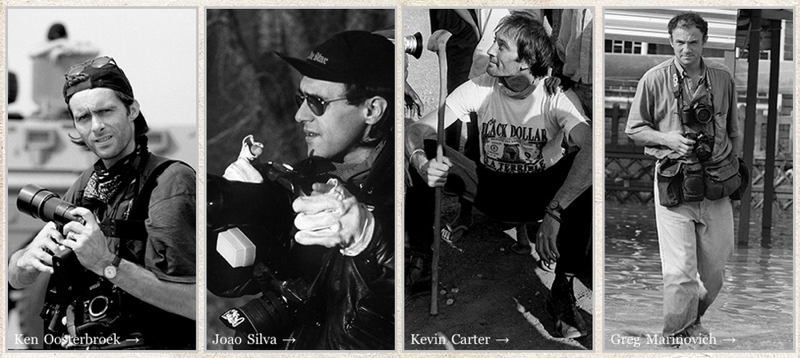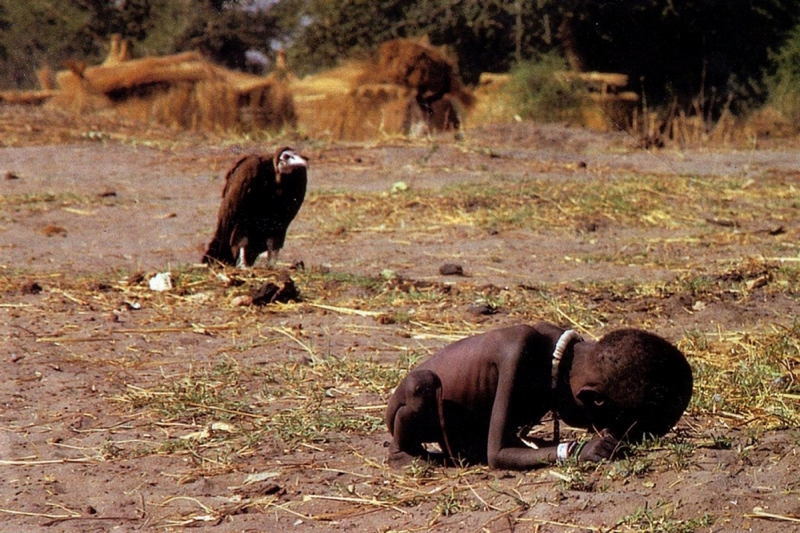A moment in time captured. Sometimes moving, sometimes merely aesthetically pleasing, photography is considered a beautiful art form by many. Oftentimes, however, people tend to forget about the person behind the lens; about the fact that someone captured a photo they may be musing over in a book, somewhere over the Internet or even in their personal old family photo albums.
People behind the lens that are particularly worth remembering however, happen to be photojournalists. The latter are professionals who have one of the toughest jobs imaginable. They are required to capture fleeting, yet profound, moments in everyday life in a way that is both visually stimulating as well as worth being ‘talked about’ or ‘discussed’.
Photojournalists have a unique eye – much as their title suggests, they must act as both journalist and photographer, both capturing a moment that uncovers some sort of truth to the human race and also stopping a moment in time in a visually striking manner. In both instances, this photo must leave an impression on viewers.
What most people are unaware of is the fact that oftentimes, photojournalists must expose themselves to harmful, dangerous and even mentally and emotionally straining situations in order to get the perfect shot. They must ‘throw themselves in the action’ in order to capture what most people would otherwise be running away from or avoiding.
A particularly reflective story that sheds light on what photojournalists go through is that of late South African photojournalist Kevin Carter, the person behind the well-known Pulitzer Prize winning photograph entitled ‘The Vulture and the Little Girl’.
The Background
Carter was a South African photojournalist who had initially began his career as a weekend sports photographer in the early 1980’s. As his career progressed, he found himself photographing and documenting events of South Africa’s apartheid.
His photographs exposed the brutality of apartheid and he was even one of the first people to photograph a public ‘necklacing’ style execution, in which victims are forced to worm through a rubber tire full of petrol which is then set on fire.
Some of the photographs he had taken during that time horrifyingly and boldly exposed many of the various crimes that would occur all across the country, both by gangs and authorities. In addition to this, Carter – along with three fellow photojournalist friends Ken Oosterbroek, Greg Marinovich and Joao Silva – became well-known as the group of daring photographers who would capture what no one else would dare to even come close to.
They were dubbed ‘The Bang-Bang Club’ and there has even been a film by the same name released in 2010 that revolves around these four famed apartheid photographers.

The Photograph
Fast forward a couple of years to March of 1993 – Carter was in Sudan, documenting the famine in the South Sudan area. While on mission there, Carter found this young famine-stricken girl near the village of Ayod.
He was stunned to find the scene of the girl crouching in despair as she is believed to have been trying to reach a nearby United Nations feeding centre, while a vulture stood close by as though waiting to pounce on his ‘next meal’.
Naturally, his instinct as a photojournalist was to capture this striking scene. Shortly afterwards, he shooed the vulture away, and it is said that the girl continued her way to the feeding centre, where her family was also reportedly found.
According to an article published in The New York Times in July 1994, it is stated that following taking that photograph, “[Carter] told an interviewer in April, he sat under a tree for a long time, smoking cigarettes and crying.”
The Backlash
The photograph was later sold to The New York Times and published on March 26, 1993. It was quickly met with a lot of controversy, with many people writing in to The New York Times asking about what happened to the girl, and whether she was alright.
With an image as striking as this, many people were also quick to point fingers of blame, and in this particular case, it was easy to point blame at the photographer for choosing to take such as picture rather than helping the girl.
Although Carter did in fact shoo the vulture away, and the girl did ultimately make her way to the feeding centre, the late photojournalist was bombarded with questions such as ‘why didn’t he do more to help’ and ‘how is his camera helping’ and so on.
Perhaps it was the result of such controversy and discussion over such a powerful image that managed to eventually land Carter a Pulitzer Prize about a year later, in April 1994.
The Struggle
Having to live through and witness experiences that most people only hear or read about or see through screens, is an extremely difficult feat for any human being.

Carter had experienced his fair share of atrocities as a photojournalist, he even lost one of his best friends, Oosterbroek, while covering a gun battle in the Thokoza township outside Johannesburg together.
Yet despite everything he would see and experience, he would always boldly make the decision to go out and document what was happening in the world, to make it known to everyone around the world. These photographs are far more important than most people tend to realize; they speak to us, they spark conversations, they spark debate, and they may even spark change.
These experiences however are heavy for any human to deal with first-hand, and they ultimately took a toll on Carter. Only three months following his Pulitzer Prize win, at the age of 33, Carter took his own life.
According to The New York Times, they mention that Carter’s father told the South African Press Association, “Kevin always carried around the horror of the work he did.”
Back in his home country of South Africa, Carter took his own life and left a heart-aching note that read, “depressed . . . without phone . . . money for rent . . . money for child support . . . money for debts . . . money!!! . . . I am haunted by the vivid memories of killings and corpses and anger and pain . . . of starving or wounded children, of trigger-happy madmen, often police, of killer executioners . . . I have gone to join Ken if I am that lucky.”
Photojournalism in Egypt
With a story such as Carter’s in mind, it is once again necessary to reiterate the hardships of photojournalism as a profession. It is challenging in a variety of ways, from potentially risking one’s life to exposing oneself to incredibly heart-wrenching realities, credit needs to be given to those who choose to willingly go out and face it all.
In Egypt, for example, it is easy for the camera to become the enemy as one ventures out in efforts to document the various issues the country may be facing. From passionate protests to all sorts of danger and even poverty they are simply unable to combat, photojournalists in Egypt face many struggles as they photograph tough socio-economic realities and political events.







Comment (1)
[…] Behind the Lens: The Remarkable Story of This Pulitzer Prize Winning Photograph […]